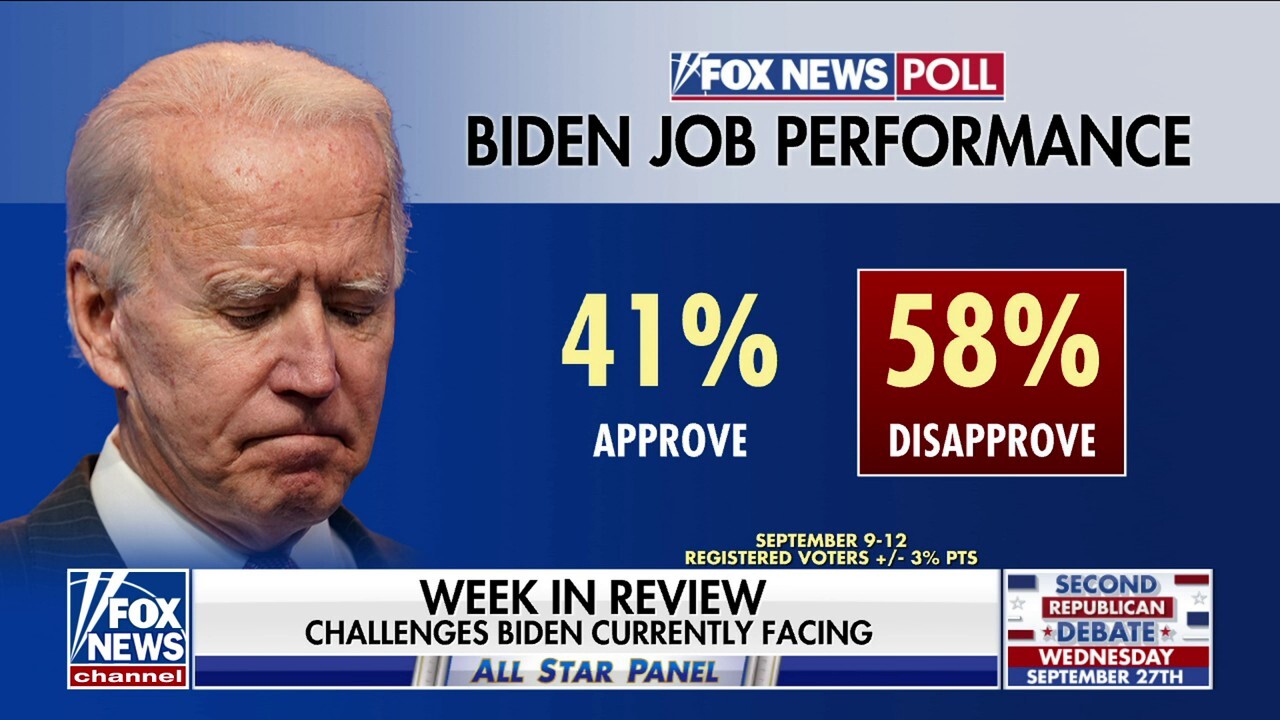Navigating The Chinese Market: Challenges Faced By BMW, Porsche, And Other Automakers

Table of Contents
Intense Competition and Domestic Brands' Rise
The Chinese auto market is fiercely competitive. International players like BMW and Porsche not only contend with each other but also face a formidable challenge from rapidly growing and innovating domestic brands such as BYD, NIO, and Xpeng. These domestic manufacturers are increasingly sophisticated, leveraging technological advancements and a deep understanding of the local market to gain significant market share.
-
Aggressive pricing strategies from domestic brands: Domestic manufacturers often undercut international competitors on price, making it difficult for established brands to maintain profitability. This aggressive pricing strategy is often coupled with attractive financing options.
-
Increasing technological advancements from Chinese manufacturers: Chinese brands are rapidly closing the gap in technological innovation, particularly in electric vehicles (EVs), autonomous driving, and connectivity features. This rapid advancement necessitates continuous investment from international players to remain competitive.
-
The rise of electric vehicles (EVs) and the need for significant investment in this sector: The Chinese government actively promotes the adoption of EVs, creating a massive and rapidly growing market segment. International brands need to invest heavily in EV technology and infrastructure to keep pace.
-
Understanding evolving consumer preferences and brand loyalty shifts: Chinese consumer preferences are dynamic and influenced by factors like social media trends and technological advancements. Brand loyalty is less entrenched compared to some other markets, creating a competitive landscape where adapting to these shifts is paramount.
Navigating Regulatory Hurdles and Government Policies
China's automotive industry is subject to complex regulations and policies that can significantly impact profitability and market access. International automakers must navigate a complex web of rules and regulations, which require significant legal and regulatory expertise.
-
Understanding and complying with ever-changing emission regulations (e.g., NEV credits): China's stringent emission standards and the NEV (New Energy Vehicle) credit system require automakers to produce a certain percentage of electric or hybrid vehicles, presenting a significant hurdle for those primarily focused on internal combustion engines.
-
Navigating complex import and export procedures and tariffs: Import tariffs and complex bureaucratic processes can increase the cost of doing business in China and impact overall profitability. Efficient logistics and supply chain management are essential.
-
Adapting to government incentives and subsidies for domestic brands: The Chinese government often provides financial incentives and subsidies to domestic automakers, creating an uneven playing field for international competitors.
-
Dealing with bureaucratic processes and potential delays in approvals: Securing necessary permits and approvals can be a time-consuming process, requiring significant resources and patience.
Supply Chain Disruptions and Logistics
Global supply chain disruptions and logistical complexities within China itself present major challenges for international automakers. The vast geographical size of China and its intricate infrastructure necessitate robust logistical planning.
-
Securing a stable and reliable supply of parts and components: Global supply chain uncertainties necessitate the establishment of diverse and resilient supply chains, potentially including local sourcing within China.
-
Managing logistics challenges within China's vast geographical area: Efficient transportation and warehousing solutions are crucial to overcome the challenges posed by China's vast size and varied infrastructure.
-
Mitigation strategies for potential disruptions to the global supply chain: Developing contingency plans and building resilience into the supply chain is vital to minimize the impact of unforeseen disruptions.
-
Building strong relationships with local suppliers to ensure efficiency: Collaborating with reliable Chinese suppliers improves efficiency and reduces reliance on potentially volatile global supply chains.
Understanding Unique Consumer Preferences and Cultural Nuances
Chinese consumers have unique preferences and buying habits that differ considerably from those in other markets. Successfully marketing and selling vehicles in China requires a deep understanding of these cultural nuances and consumer trends.
-
Tailoring marketing campaigns to resonate with Chinese consumers' values and preferences: Marketing strategies need to be localized and culturally sensitive, reflecting Chinese values and preferences.
-
Adapting product features and design to meet specific needs and tastes: Products should be adapted to meet the specific needs and tastes of Chinese consumers, considering factors such as size, features, and aesthetics.
-
Leveraging social media and digital marketing strategies effectively: Social media plays a crucial role in Chinese marketing, requiring a well-defined digital marketing strategy to effectively reach the target audience.
-
Building strong relationships with key opinion leaders (KOLs) in China: KOL marketing is highly effective in China, and building relationships with influential figures can significantly impact brand perception and sales.
Technological Advancements and Innovation
China is a hotbed of technological innovation in the automotive sector. International automakers must invest heavily in R&D to compete effectively in this rapidly evolving landscape.
-
Investing in R&D for EVs, autonomous driving, and connected car technologies: Significant investment in research and development is crucial for staying competitive in areas like EVs, autonomous driving, and connected car technologies.
-
Collaborating with Chinese tech companies to leverage their expertise: Partnerships with innovative Chinese technology companies can provide access to valuable expertise and resources.
-
Developing digital solutions and services tailored to the Chinese market: Developing digital solutions and services catered specifically to the Chinese market is essential for building brand loyalty and meeting consumer expectations.
-
Staying ahead of the curve in terms of technological advancements: Continuous innovation and adaptation are vital to maintain a competitive edge in this dynamic market.
Conclusion
Successfully navigating the Chinese auto market challenges requires a multifaceted approach. International automakers like BMW and Porsche face significant hurdles, including intense competition, regulatory complexities, and unique consumer preferences. By understanding and addressing these challenges in the Chinese auto market, from adapting to consumer preferences to mastering the regulatory landscape and embracing technological advancements, automakers can position themselves for success. Ignoring these challenges could lead to missed opportunities in the world's largest automotive market. Invest time and resources in understanding the intricacies of the Chinese automotive market and develop a robust strategy to overcome these hurdles and unlock the significant potential it offers.

Featured Posts
-
 The Week That Defined Joe Bidens Post Presidential Challenges
May 25, 2025
The Week That Defined Joe Bidens Post Presidential Challenges
May 25, 2025 -
 Nvidia Rtx 5060 Review Controversy A Wake Up Call For Gamers
May 25, 2025
Nvidia Rtx 5060 Review Controversy A Wake Up Call For Gamers
May 25, 2025 -
 Test Porsche Cayenne Gts Coupe Czy Spelnia Oczekiwania
May 25, 2025
Test Porsche Cayenne Gts Coupe Czy Spelnia Oczekiwania
May 25, 2025 -
 George Russells Rise Leading Mercedes With Confidence And Calm
May 25, 2025
George Russells Rise Leading Mercedes With Confidence And Calm
May 25, 2025 -
 Camunda Con 2025 Unlocking The Power Of Orchestration With Ai And Automation In Amsterdam
May 25, 2025
Camunda Con 2025 Unlocking The Power Of Orchestration With Ai And Automation In Amsterdam
May 25, 2025
Latest Posts
-
 Mercedes F1 Wolffs New Hints On Russells Contract Status
May 25, 2025
Mercedes F1 Wolffs New Hints On Russells Contract Status
May 25, 2025 -
 The George Russell Contract Why Mercedes Must Act
May 25, 2025
The George Russell Contract Why Mercedes Must Act
May 25, 2025 -
 Will Mercedes Re Sign George Russell The Key Factor
May 25, 2025
Will Mercedes Re Sign George Russell The Key Factor
May 25, 2025 -
 Toto Wolffs Latest Comments On George Russells Mercedes Contract
May 25, 2025
Toto Wolffs Latest Comments On George Russells Mercedes Contract
May 25, 2025 -
 1 5 Million Debt Paid George Russells Financial Update And Its Impact On His F1 Career
May 25, 2025
1 5 Million Debt Paid George Russells Financial Update And Its Impact On His F1 Career
May 25, 2025
